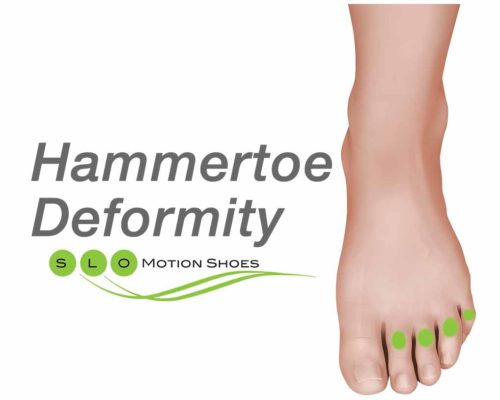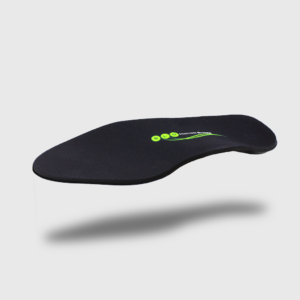A hammertoe is an abnormal bend in the middle joint of your toe. It is most commonly seen in second, third, or fourth toe.

Symptoms
- Pain at the tip of the toe
- Pain at the top of the middle joint of the toe
- Movement of affected toe is difficult or painful
- Corn or callus on top of the middle joint of toe
- Difficulty finding comfortable shoes
Causes
- Muscle imbalance in foot and lower leg
- Tight calf muscles
- Excessive foot pronation (rolling inward)
- Wearing high heels
- Wearing shoes that are too tight around the toes
- Toe injury, such as a jam, stub or break
Treatments
Treatment is focused on pain relief at the site pain. It is important to consult with a doctor before attempting self-treatment of a corn or callus if you have diabetes, poor circulation, or lack of sensation in your feet. Surgical options are available if conservative treatment is ineffective.
- Wear shoe with soft / padded upper materials
- Properly fitting shoes with adequate room for toes
- Padding to relieve pressure caused by callus or corn
- Callus or con reduction
- Orthotics or pads to reposition toe
- Exercises to stretch and strengthen toe muscles
The toes provide a major function in creating stability of the foot during walking. The primary movement of the toes is flexion or bending down and extensor or bending up during the walking cycle. A hammertoe is a contracture of the joint in the middle of the toe most commonly seen in the second through fifth toes. It is caused by an imbalance of the flexors muscles and extensor muscles of the foot and lower leg. The flexor muscles act to bend the toes to the ground and the extensor muscles lift the toes off of the ground.
The most common cause of the flexor to extensor imbalance can be seen in the pronated foot. Excessive foot pronation can causes excessive lengthening of the foot which bends the toe by placing more pull on the flexor tendons as they attach to the toes. The pronated foot also, leads to instability of the foot which can cause the flexor muscles to pull harder in the attempt at stabilizing foot during walking. Excessively tight calf muscles can cause the extensor muscles to work harder to lift the foot off of the ground during walking which can also contribute to the bending of the toes during walking.
Pain from a hammertoe is generally due to the development of a callus or corn that occurs as a result of friction between the top of the bent toe and the surface of the shoe. Pain at the tip of the toe is caused by the excessive bend of the toe pushing into the sole of the shoe.
Treatments including callus reduction, padding to decrease friction as well as surgical options are common. Thoughtful shoe selection, including the use of wider toe box shoes as well as shoes with a deeper toe box can be integral in reducing the friction that causes the painful callus.
Hammertoe Deformity Discussion Board
Select a View
Click on the view that most represents the area of discomfort that you are experiencing. Drag your cursor over your area of concern to obtain a brief description of the potential condition.
Suggested Product
-

Standard Orthotic
$60.00Our standard orthotic. Relieves pain and provides all day support.Select options







